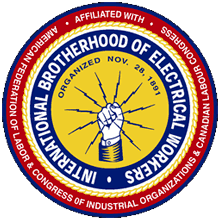February 28, 2012
By Marc Bussanich, LaborPress City Reporter
LaborPress reported in early January the new labor contract TWU Local 252 reached with the new private bus operator, Veolia Transportation Services, after the MTA and Nassau County couldn’t reach a new financial agreement to support public bus transit. We also reported, citing a report by Long Island Jobs with Justice, the potential for bus service cuts in Nassau based on the private company’s record in other cities.
“It’s correct that the company is not eliminating routes, but the proposed service changes represent big service cuts. Veolia is reducing service on over 60 percent its routes,” Obernauer said.
According to the Nassau Inter-County Express system, the proposed changes include two new express routes, route improvements, adding running times, coordinating schedules better with LIRR trains, restoring service to Mercy Medical Center, and no fare increases.
But as Obernauer noted, and published on the NICE website, certain routes will experience service cuts. For example, peak service for the n19 route out of Bellmore will operate every 30 to 40 minutes instead of every 20 to 30 minutes. Midday service will run every 60 minutes rather than every 30 and Saturday service will operate every 60 minutes on the same route.
Obernauer mentioned that LIJJ already has data showing that only 200 riders or less used the service on certain routes on a given Saturday. But the organization is calling for NICE to release figures on the number of riders currently using midday services so as to determine and evaluate how significant the cuts will be.
Obernauer said that some have questioned what the big deal is if unused services are cut on Saturday’s. But she quickly noted it is a big deal for a couple of reasons.
“First of all, you’ll be doubling the ridership on the buses running infrequently. Also, buses do not run on a set schedule, unlike trains. If a bus is stuck in traffic, or doesn’t arrive on time for some other reason, riders will have to wait a whole hour before they can board.”
Also, the consequences could extend beyond just simply reducing running times. Obernauer said one possibility is that home health care workers will not be able to get to their jobs in the suburban areas because they do not have the money to purchase autos.
“One of our members, who earns about $8 an hour at a Stop ‘N Shop, pays $11for cab service each night to get back and forth to work.” Ironically, one of the members who sits on the five-member transit advisory committee for Nassau County is the owner of the Islandwide Taxi & Airport Services company, while only one pro-labor member, a Democratic minority member of the Legislature, is on the committee.
“The taxi company owner sitting on the committee represents a direct conflict of interest to public transit, because the worse public transit services are, the more money he makes,” Obernauer said.
Although the changes to the bus services are just proposals to date, which take effect on or about April 8, Obernauer acknowledged that LIJJ and its transit allies will not be able to roll back the impending service cuts.
Instead, the organization is trying to create a long-term plan for the county’s public transit system by working with political leaders who’ll commit to securing funding streams so as to avoid future cuts and remove riders’ concerns over frequency or quality of service.
But Andy Krauss, a spokesman for Veolia, also emphasized that the route changes were necessary for a couple of reasons.
“The idea behind the changes is to rebalance the system. There are certain routes that cost more to operate, and have the least benefit to the fewest number of passengers. Also, the changes are necessary to cover a budget shortfall, which, incidentally, would have required additional changes or cuts based on the MTA’s budget last year.”
Krauss noted that the MTA’s 2012 budget to run the system formerly known as LI Bus would have been $156 million, but the County said it only had $106 million available.
“Because of the efficiencies and productivity Veolia is creating, we’ve been able to reduce operating costs by about $35 million.” But those efficiencies required to cover the shortfall have been achieved, as noted, via schedule adjustments, combining routes and reducing service at certain hours.
However, for the first time, express service will be introduced, according to Krauss.
“About half of all NICE riders ride across the County line from Hicksville, Hempstead and Roosevelt Field to access subway lines at Flushing and Jamaica. The new express service will shed, depending upon where a rider boards, 20 minutes’ worth of travel time each way.”
Meanwhile, Obernauer of LIJJ pointed out that express routes are the most profitable because buses use less gas going from point A to point B than from point A to point B to point C, etc.
“Even though it’s innovative, the faster service, which Veolia should be providing, is actually saving the company money, rather than using the money generated from express service to improve overall service or stave off service cuts.”
Although Krauss could not provide definite numbers on the number of riders who’ll be negatively affected by schedule adjustments, he acknowledged that, for an average working person unable to get to work on time via bus transit, “It certainly can be less convenient. There’s no doubt about that.”
But he reiterated that the changes were intended to affect the fewest number of passengers, and while some people will be definitely inconvenienced, other riders will see significant benefits while still others will notice no difference in service.
There’ll be no fare increases for all of 2012, but Krauss couldn’t say if they’d be possible for 2013 as budget assessments will determine the need or lack of need to raise fares.
“Hopefully, by 2013, we’ll be talking about improved and expanded service at the same operating costs as today,” said Krauss.



